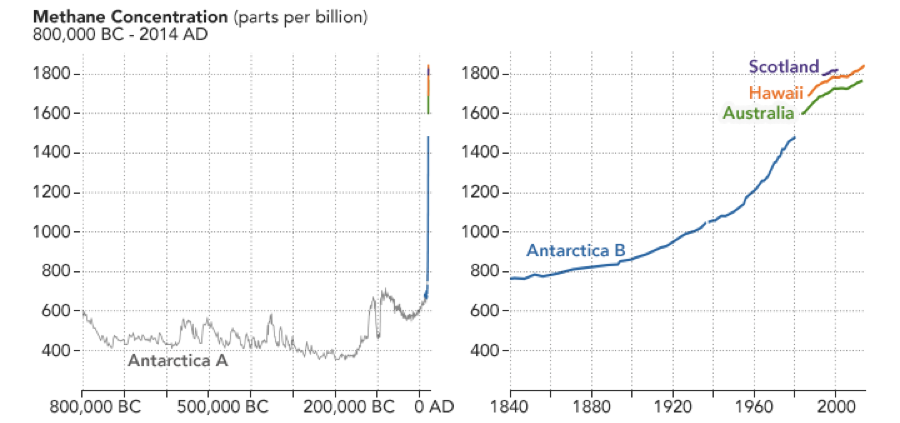By Richard Ward, Kevin Haley
Leave it to the rocket scientists to solve our biggest climate mysteries. That’s exactly what NASA has done to kick off 2018, using a spectrometer imaging satellite to measure global methane emissions—a potent greenhouse gas that accelerates climate change—and revealing an alarming increase in these emissions that threatens our climate.

The Intergovernmental Panel on Climate Change (IPCC) has shown that since preindustrial times, methane has been responsible for 20 percent of global warmingand nearly 40 percent of the climate forcing, a direct measure of the amount that the Earth’s energy budget is out of balance. Methane currently contributes almost 40 percent to the heat-trapping effect of all human-produced greenhouse gases in the atmosphere.
And this problem is only getting worse. As NASA explains, since just 2006, methane concentrations in the atmosphere have risen sharply and are currently causing an overbalance of more than 25 million tons per year. Clearly this cannot continue if we have any hope of limiting global temperature rise to 2 or even 3 Celsius degrees, as outlined in the Paris Climate Accord.
Enter the recent NASA study. Its research confirms that 17 of the extra 25 million tons of annual methane emissions come from the fossil fuel sector—or nearly 70 percent of all new emissions! During this period, there has been a massive increase in hydraulically fractured oil and natural gas production while coal mining has remained constant. In addition, natural gas wasted in unproductive flares and vents to the atmosphere have been on the increase for the past eight years. By inference, the increase in both petroleum production and the intentional wasting of the associated gas provides a smoking gun to the spiking atmospheric concentrations of methane. Reliable methane emissions estimates in the oil industry are lacking since measurements of partial combustion and vents are close to absent, and measurements of gas leakage from transport and distribution are scarce.





